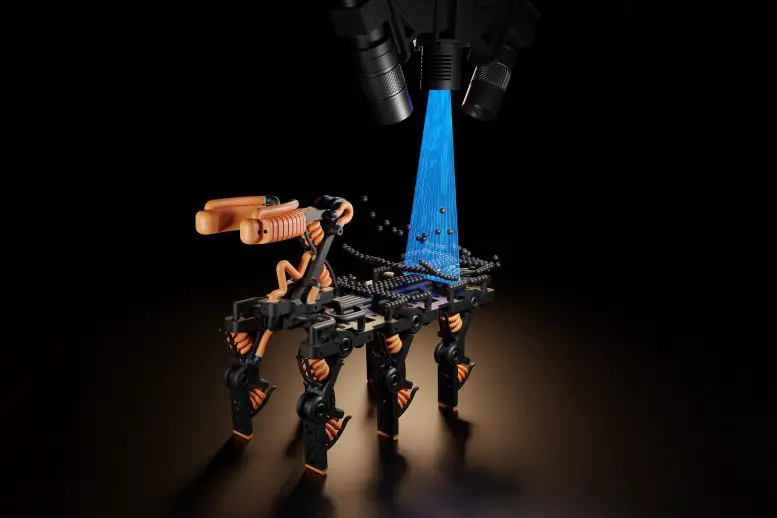Three visions of automation.
When we think about nanomachines that can create self-assembly structures we can say that quadcopters that follow the process are eye. And the AI that controls those machines is the invisible hand. The abilities of the AI-controlling self-assembly vehicles and structures depend on the tools. That those systems have.
The new AI-driven laboratories are powerful tools in the R&D process. Those self-driving labs can operate without human control. Those laboratories can installed in satellites and miniature space shuttles. And they are allowed to operate for months or even years in zero-gravity conditions in certain well-controlled chemical environments. The self-driving laboratories can have scanning laser microscopes and quantum-computer and AI-based analyzation systems. That kind of system can revolutionize complicated chemical compound production. AI-driven laboratories can be the tools that can make new levels of R&D in all sectors from civil to military research.
"Researchers have developed SmartDope, an autonomous system capable of rapidly identifying the best materials for electronic and photonic devices, addressing a longstanding challenge in quantum dot synthesis. SmartDope operates as a self-driving lab, conducting experiments in a continuous flow reactor and utilizing machine learning to optimize quantum dot production. In just one day, it surpassed the previous quantum yield record, showcasing the potential of self-driving labs for accelerating material science. Credit: Milad Abolhasani, NC State University." (ScitechDaily.com/SmartDope: The “Self-Driving Lab” That Unlocks Quantum Dot Secrets in Hours – Instead of Years)
"A new high-throughput, multimaterial 3D inkjet printer uses computer vision to rapidly and automatically control the amount of material being printed in real-time. This rendering shows a robot being built layer-by-layer using the process. The black spheres represent the material that the printer uses. The material is then cured by UV light, represented in blue. At the top of the image are the cameras that scan the procedure and adjust accordingly. Credit: Moritz Hocher" (ScitechDaily.com/https://scitechdaily.com/mits-autonomous-vision-innovative-3d-printer-can-watch-itself-fabricate-complex-objects/)
"MIT engineers have developed a new laser-based method, LIRAS, to test the dynamic properties of metamaterials without causing damage. This technique, involving the use of two lasers to create and measure vibrations, enables a deeper understanding of materials like polymers at the microscale, paving the way for advancements in fields such as ultrasound technology and protective gear".
1) 3D printers can make copies of themselves. And that turns them into self-replicating machines called "Von Neumann machines". The Von Neumann machine is a machine that can make copies of itself. And 3D printers with highly accurate AI and sensor systems can make this thing possible. These kinds of tools are interesting. And they can turn production capacity very high.
2) Generative AI can improve the abilities of those Von Neumann machines. That thing can make it possible to create systems that can find the raw materials straight from nature. And those creative AI tools can also make it possible to create a system.
That can use alternative raw materials. The system requires laser spectrometers and knowledge of what kind of materials those systems require.
Then in the Von Neumann machines is the system that can separate those raw materials using centrifugal separation. The system can melt raw materials that the other robots bring from nature. Then, the system can use microwave chambers connected to a centrifuge and then separate raw materials.
3) Lasers can be the next-generation tools for making new types of materials. The laser can create next-generation solar panels with a very large surface area. Those surface areas make those solar panels more effective than ever before. The same photovoltaic phenomenon can used in new very highly accurate energy transfer systems that can used in the new nanosized microprocessors. The new materials are the key elements in the next-generation intelligent systems. The only thing that limits the abilities of intelligent systems is imagination.
Nanomachines can make textiles that can cut themselves into pieces. After that fix themselves. The nanomachines are like Lego bricks. They can form almost everything. The reason why nanomachines cannot form things like cars is simple. Nobody ever created a nanomachine swarm that can turn into a car.
The requirement for that operation is those nano- or mini-machines have numbers. The nanomachines require information about their position in the entirety. And of course, they require an eye-like quadcopter that sends information about the nanomachine's positions. In that case, the quadcopter is like an eye, and the AI is the invisible hand that collects those self-moving robots. In the simpler model, the system includes carriers like other quadcopters that carry those nanomachines in the right places.
https://scitechdaily.com/mits-autonomous-vision-innovative-3d-printer-can-watch-itself-fabricate-complex-objects/
https://scitechdaily.com/smartdope-the-self-driving-lab-that-unlocks-quantum-dot-secrets-in-hours-instead-of-years/
https://scitechdaily.com/unlocking-futuristic-materials-the-laser-key-to-advanced-metamaterial-structures/






No comments:
Post a Comment
Note: Only a member of this blog may post a comment.